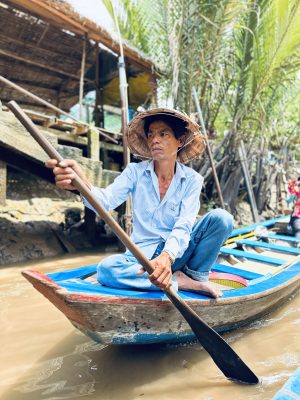Nestled in the heart of Vietnam, the Mekong Delta emerges as a tapestry of cultural richness and natural splendor. Far removed from the urban hustle of Saigon, Mekong Delta unfolds at a leisurely pace, enticing travelers into a world where time seems to stand still. In this guide, we delve deeper into the wonders of the Mekong Delta, unveiling its hidden gems and inviting you on an immersive journey through its enchanting landscapes.

Embracing the Essence of the Mekong Delta
In the Mekong Delta it is possible to discover traditional villages, splendid vegetation, lush and impenetrable, and precious testimonies of Vietnamese artistic genius and religious devotion. The floating markets are very picturesque, the epitome of a society that with modesty and tenacity has built its prosperity and every aspect of its existence along the venerated river.

Must-Visit Destinations
The Mekong River delta region is very large and when choosing the area or location to visit you must naturally take into account practical aspects such as the distances involved, travel times and the organization of the overall itinerary in southern Vietnam. Among the places of greatest interest and most easily accessible from Saigon are the following:
My Tho: The Main Gateway To The Mekong Delta
My Tho is one of the favourite destinations for those who want to get a rough idea of what the landscape of the Mekong Delta is like with a simple and fleeting day trip from Ho Chi Minh City.
Some of the to do in this are are usually a canoe or sampan ride through the labyrinthine network of canals that runs through the area’s forest as well as a visit to a craft workshops, vegetable gardens and orchards. Excursions have a low cost usually between 250,000 and 1,000,000 dong per person.
My personal recommendation and must see in this area is the Vinh Trang Pagoda (is circa 3 km away from My Tho easily reachable by taxi).
The Vinh Trang Pagoda, a sanctuary of intricate sculptures and gilded Buddhas, stands as a testament to the region’s spiritual heritage.
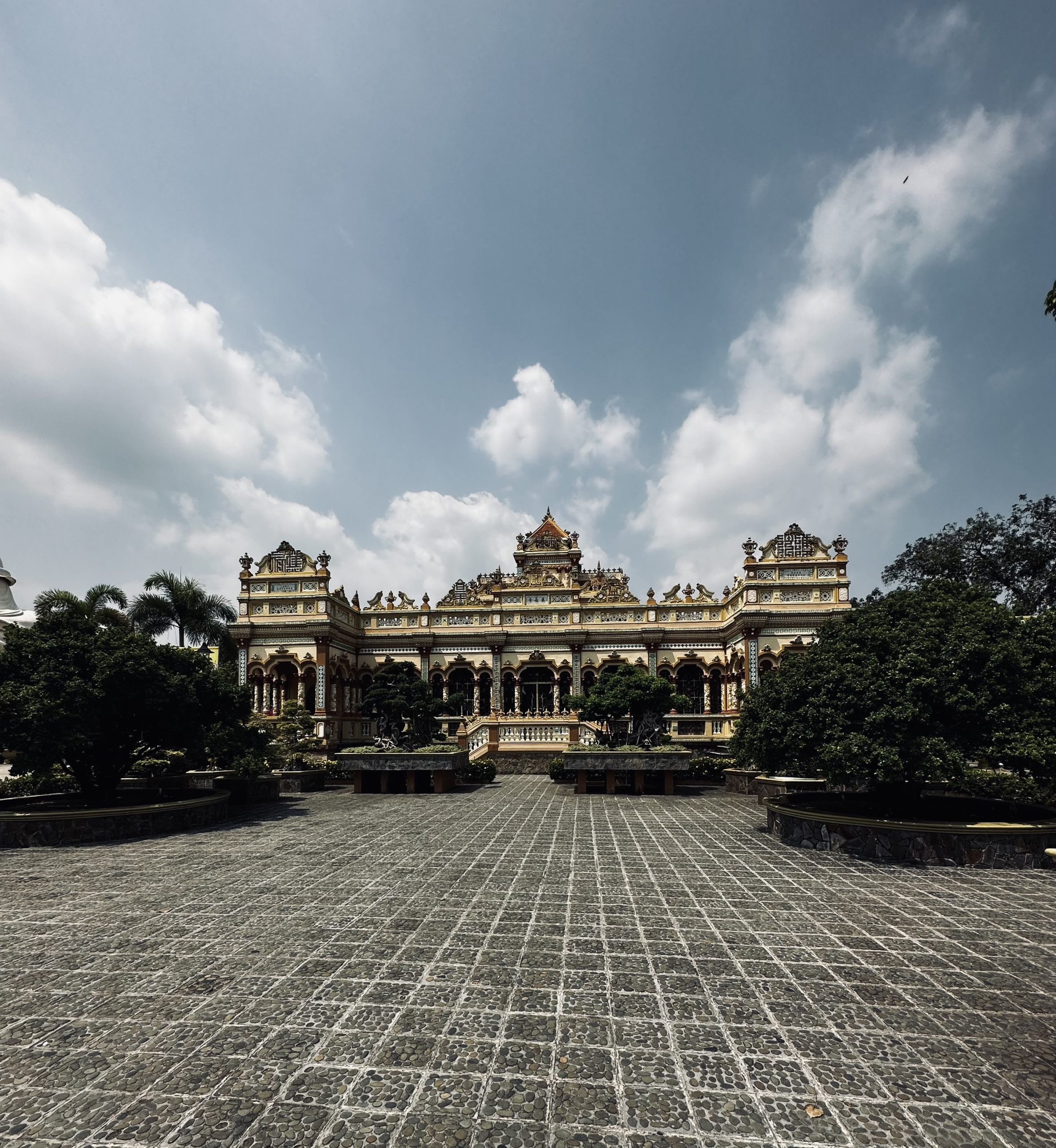
Vinh Trang Pagoda mesmerizes with its intricate architectural sculptures and golden-gilded Buddha statues. The pagoda boasts around 60 Buddha statues, crafted from various materials such as wood, bronze, cement, terracotta, all adorned with glistening gold. These statues date back to the late 19th and early 20th centuries.
The heart of Vinh Trang Pagoda lies in its Buddha statues, each with its own unique charm. There’s something profoundly calming about standing before the Statue of Maitreya Buddha, its towering presence reminding you of the peace that resides within. And then, there’s the Statue of Amitabha Buddha, a symbol of infinite compassion, silently watching over the visitors. As you gaze at the Reclining Buddha, stretched out in utter tranquility, you can’t help but feel a sense of serenity washing over you.
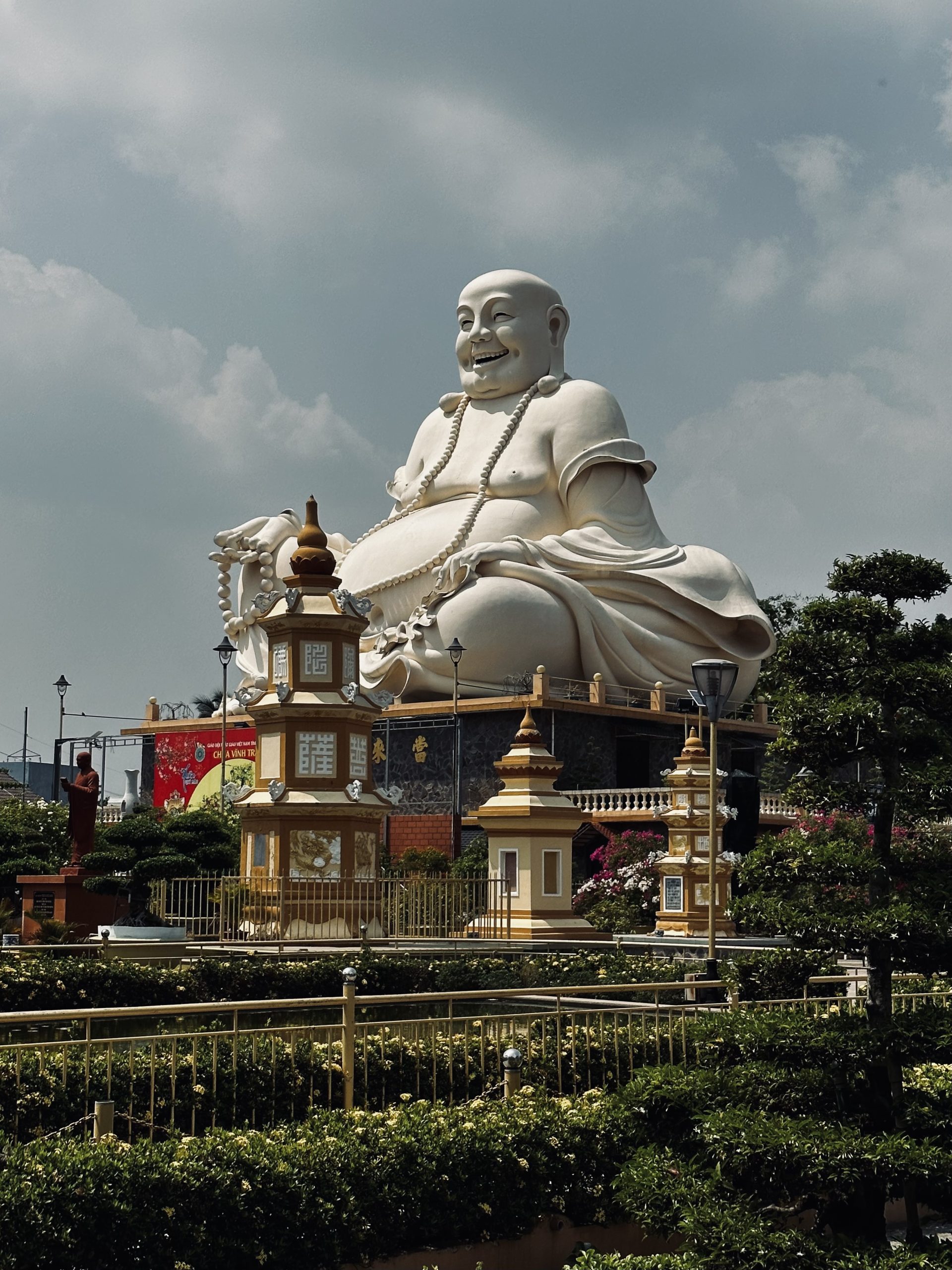
In addition to the colossal and majestic Buddha statues, Vinh Trang Pagoda also houses a 7-story tower located at the rear. This tower serves as a repository for the ashes of Buddhist disciples and monks of the pagoda.
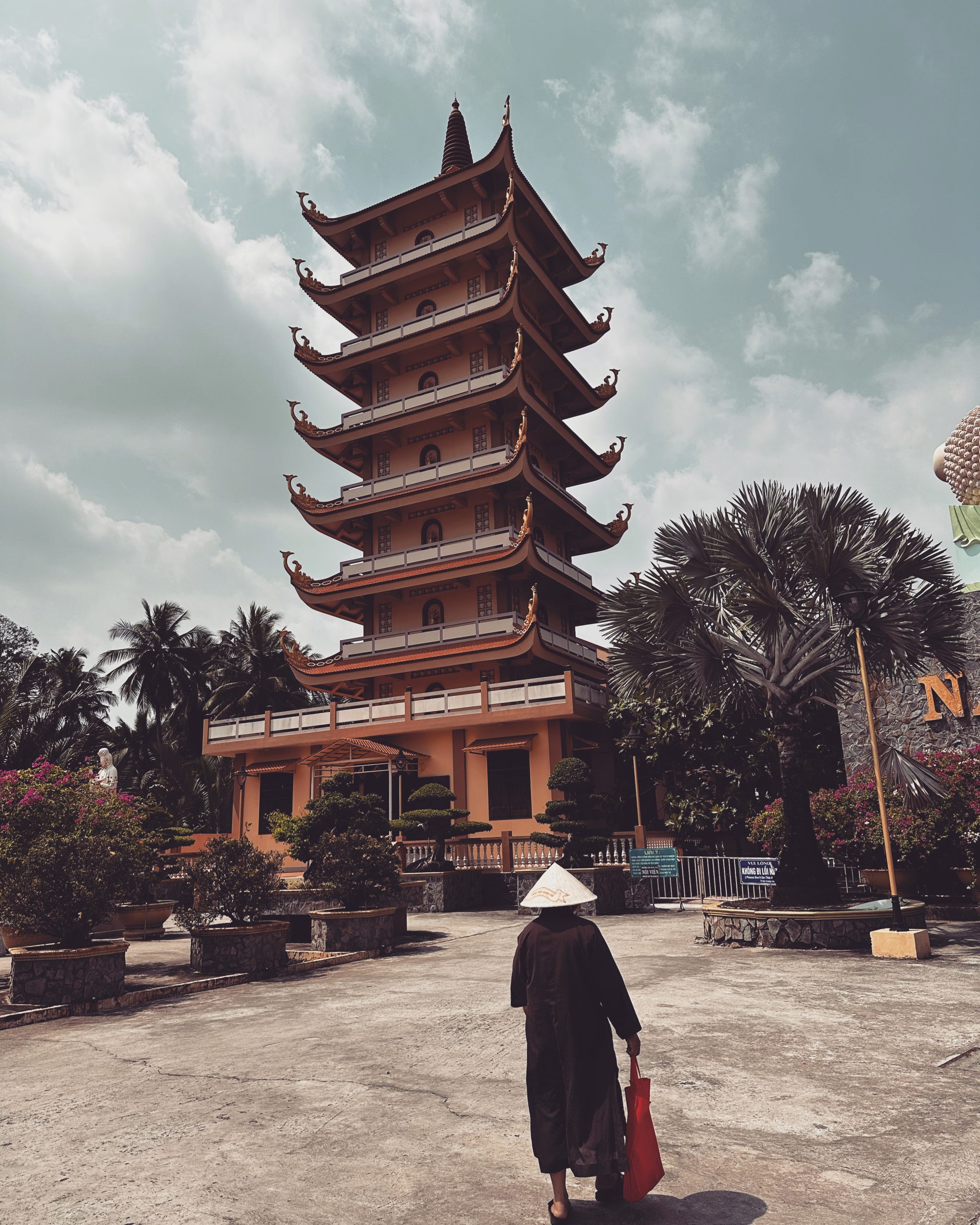
Ben Tre: The “Land of Coconut”
Just 80km away from the bustling Ho Chi Minh City. Ben Tre is often called the land of Cocunut, with its natural landscapes, beautiful canals, It is an ideal place for those who want to get away from the bustling city and seek a calm and peaceful refugee. One of the most amazing experiences in Ben Tre is taking a paddle-boat cruise through the water coconut canals.
Cai Be: Where Tranquility Meets Tradition
A small urban center where it is pleasant to spend at least one night in a nha nghi (family-run inn) is Cai Be. Less touristy than My Tho, Cai Be is a place suitable for those who want to take their time and embrace slow travel. The bonsai gardens are lovely. In Cai Be there is a small but lively floating market. The location is also good, ideal for excursions to the provinces of Dong Thap and Long An.
HOW TO GET THERE
By Bus: Mien Tay Station in Ho Chi Minh City acts as a portal to the Mekong Delta, with an array of day and night buses connecting travelers to various destinations. The company that often offers the best service is Futa (Vietnamese name: Phuong Trang). Direct connections are not always available. Sometimes intermediate stages are necessary, which make the journey longer. Approximately the cost by bus is between $3 – $7 and takes almost two hours to get to My Tho and circa 3h 31m to get to Ben Tre from Ho Chi Minh City.
By Motorbike: If you want to take your own transport you should be aware that the Mekong Delta is not one of the best areas to travel by motorbike. The roads are very dangerous, even riskier than usual, and very busy with heavy vehicles. Taking secondary roads is not always possible and in any case often lengthens the journey in an unpredictable way. The digital maps commonly used in Italy and Europe are not updated as they should be. When preparing the itineraries I advise you to prudently take into account an average speed of no more than 30 km/h (and you will rarely be able to run at over 50 km/h).
WHERE TO STAY
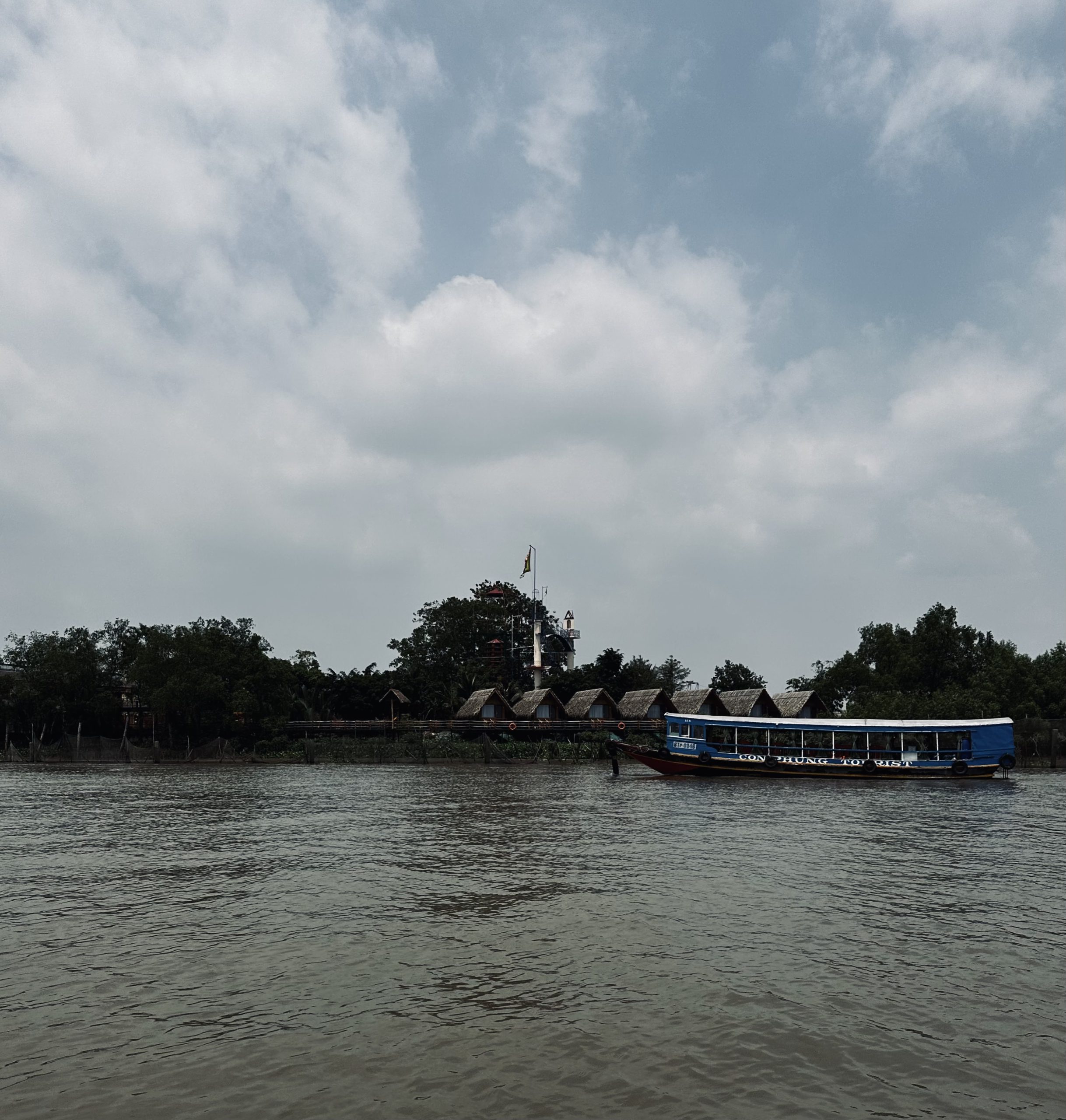
The Mekong Delta is rightfully considered one of the best places to experience staying at a homestay or Nhà Nghỉ (Guest House) in Vietnam. The price ranges from 25 euros per night in a sort of hostel to hundreds of euros if you opt for a luxurious bungalow.
he families are hospitable, sincerely friendly, and sleeping in the traditional houses will make your experience unforgettable. To find homestays and eco friendly accommodation in the Mekong Delta is super easy, you can check some options via Booking.com or homestay.com.
